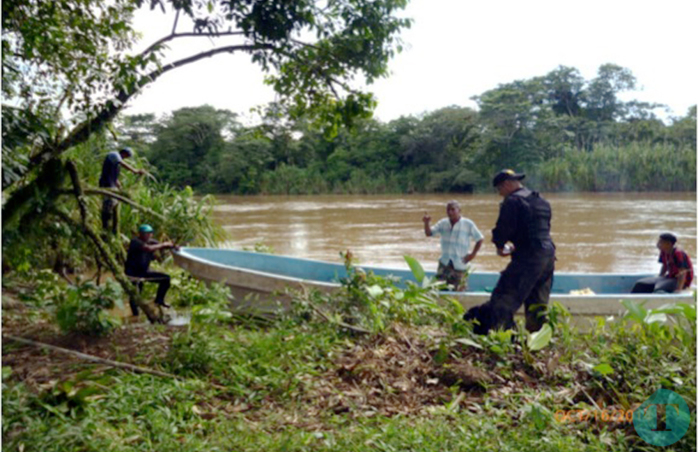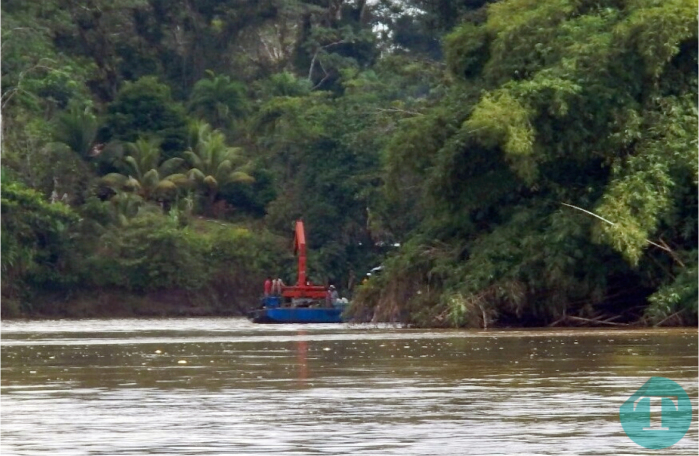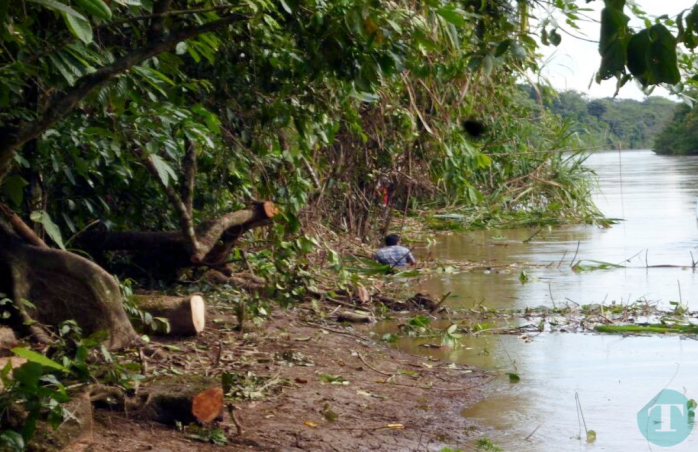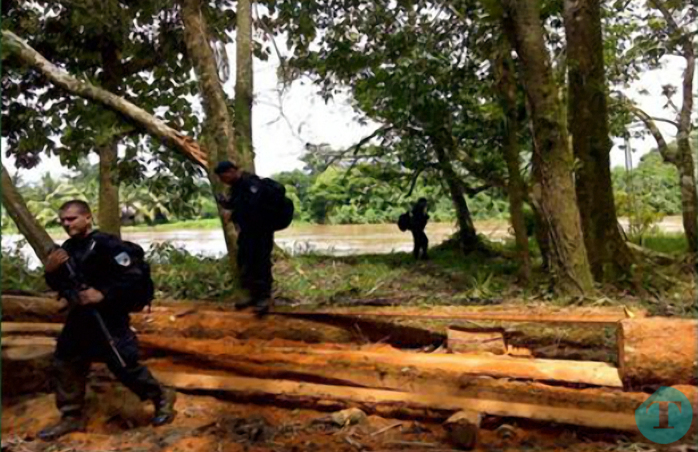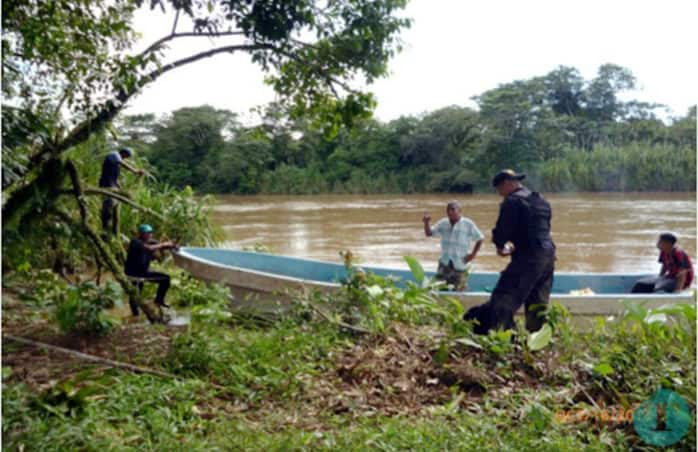Costa Rican officials on Tuesday afternoon shared with members of the press photos and video taken on Nov. 10 that allegedly shows Nicaraguan workers using chainsaws to remove trees in Costa Rican territory, near the two countries’ border.
The images, made public by Costa Rica’s ministers of foreign relations and public security, Manuel González and Celso Gamboa, respectively, also show a dredging boat on the Río San Juan that – according to González – is eroding the riverbank on Costa Rica’s side of the border. The ministers accused Nicaragua of attempting to widen the river – which serves as a natural border between the two neighbors – along a 7 kilometer-stretch.
Nicaragua’s Foreign Minister Samuel Santos last Saturday told reporters in his country that crews are working “to provide maintenance to the river.”
“The dredgers are eroding the Costa Rican side of the riverbank. If [Nicaragua] wants to widen the river, they should do so on their side of the border,” González said at a press conference Tuesday following a weekly Cabinet meeting at Casa Presidencial.
He also denied Nicaragua’s argument that Costa Rica is trying to lay claim to river rights “beyond the navigation rights outlined by [a bilateral] treaty and ratified by the International Court of Justice at The Hague.”
Video also appears to show ongoing dredging of the river supervised by former guerrilla leader Edén Pastora, known as “Comandante Cero.” At one point in the video, a worker states that the group was hired by the Nicaraguan government to “clear” the San Juan’s banks.
González countered recent statements by Nicaraguan President Daniel Ortega claiming the work is not affecting Costa Rican territory.
“They [the Nicaraguan government] say that none of their employees are on Costa Rican territory, but here they are in Costa Rican territory,” González said as he showed reporters the images.
Gamboa said Costa Rican President Luis Guillermo Solís had given authorities the order to arrest anyone found conducting illegal activities inside Costa Rican territory.
Costa Rica will add the new evidence to ongoing cases against Nicaragua at the world court in the Netherlands. The court had previously ordered both countries to refrain from any activity in a disputed border area that might aggravate the tense situation.
In March, a group of experts from the Convention on Wetlands of International Importance (Ramsar), including specialists in hydrology and marine biology, confirmed that Nicaragua’s dredging of two artificial canals in Costa Rica’s northeastern territory had caused considerable environmental damage to protected wetlands.
The legal dispute between Nicaragua and Costa Rica will resume next year as both parties are scheduled to present new evidence and to appear for hearings at The Hague in February and March, González said.
